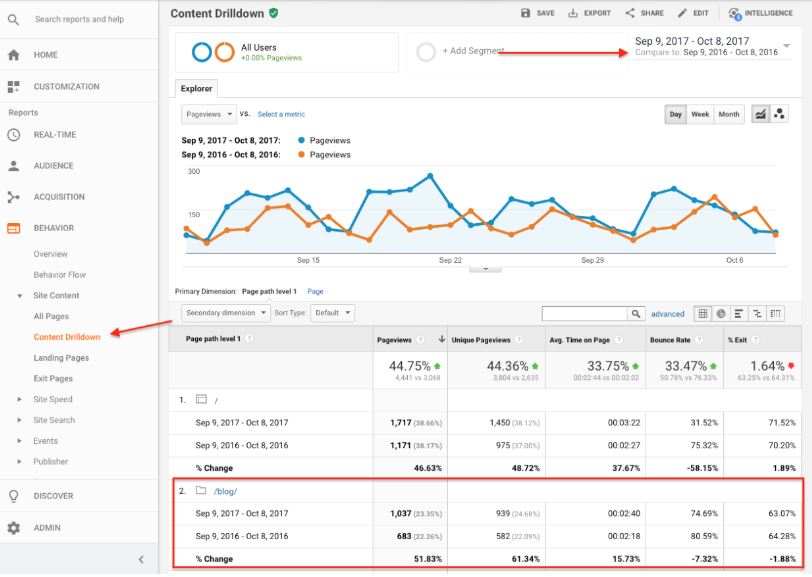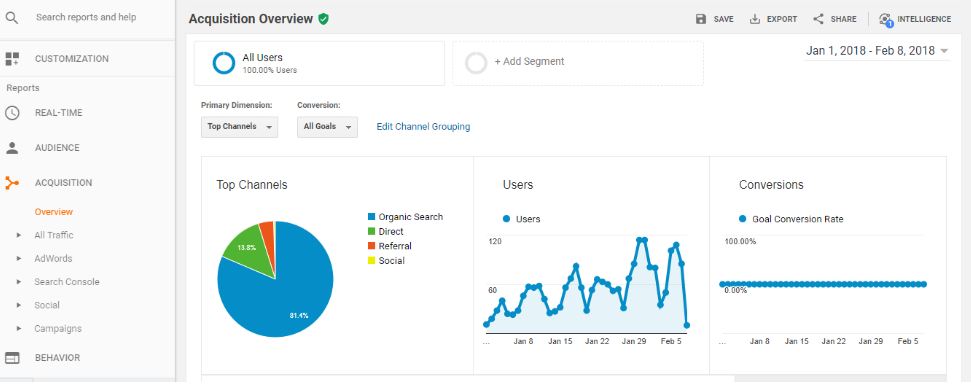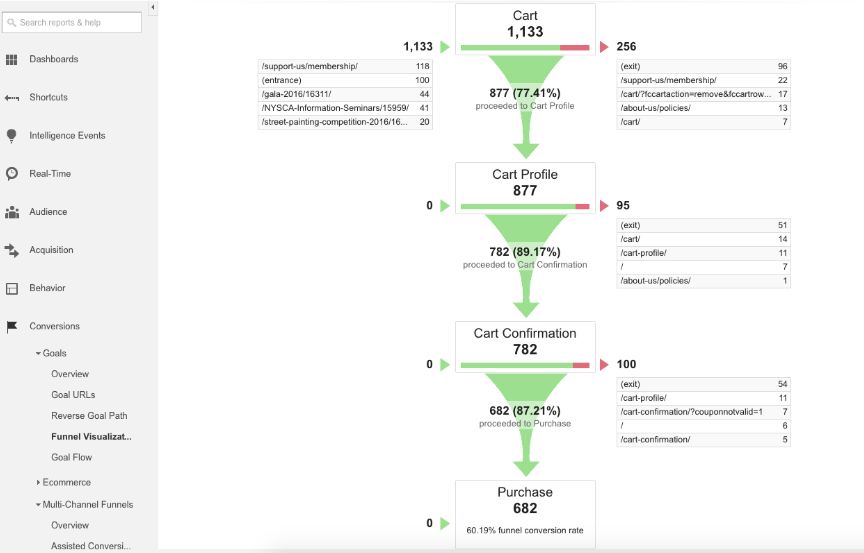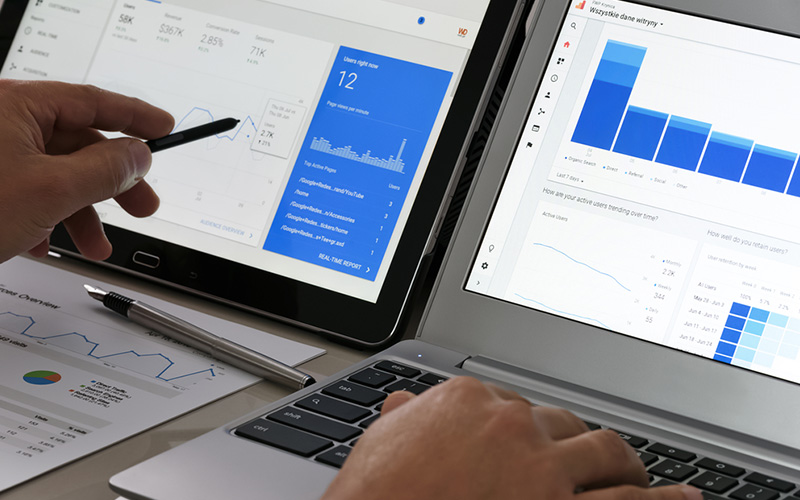Physical retail has lost much of its influence with the rise of eCommerce and online shopping in the last couple of decades. According to the survey, global eCommerce sales will reach $4.5 trillion by 2021, grabbing more than half of the total market share. This fact reveals two important trends of contemporary business.
First of all, online shopping is becoming the new ruler of the retail industry. Secondly, the competition in this field is getting more and more difficult, which means that you have to be more precise, creative, and proactive if you want to keep the company profitable in the long run.
Google Analytics plays a major role in that regard because it enables you to monitor and analyze the performance of your website. It’s an inevitable tool for entrepreneurs who want to understand user behavior and adapt sales solutions so as to fit the needs of their target groups. In this article, we will show you 7 advanced Google Analytics strategies for B2B sales.
1. Demographics Analysis
Digital retail may be technically different than traditional shopping but the nature of buyers and their habits remain the same. In that regard, it is still very important to understand the basic demographic segmentation among clients. This way, you can make sure that website content correlates with the traits of potential customers.
Your job in Google Analytics is to discover the best type of content for each group and use demographic information to find the potential for targeting new territories or remarketing opportunities, detect loyal clients or one-time visitors, etc. However, demographics require a customized approach and you need to set up your own metrics to follow in Google Analytics.
Doing so, you can get valuable insights about customers who previously left personal information on your webpage. What you want to know depends on the business preferences but entrepreneurs usually search for the following information:
- Location, age, and gender
- Company and its products
- Industry
- Business size and number of employees
- Annual turnover
We remind you once again that you will only see data about visitors who actually registered to download documents or subscribed to your mailing list. However, these are often the most important followers because they leave you with concrete leads and generate profit.
2. Content Engagement Reports

Besides demographics, it is necessary to learn how clients interact with your content. You need to ask yourself a few questions: Where they come from? What do they do on my website? What kind of content do they prefer? Once you find answers to these questions, you can upgrade your content marketing strategy.
A Content Drill Down Report will show you all details about user behavior and the quality of content in general. You will find it in the section entitled Behavior, after which you choose Site Content – Content Drill Down. If you want to narrow down the analysis, simply add a search category like “products” and it will list only the pages that contain product information.
Conducting this report, you get to see the list of the most visited pages, time spent on each page individually, bounce rates, and other metrics you consider relevant for the business.
You will often run into technical shortcomings in your content, so we strongly suggest you hire a professional editor or using proofreading services like Grammarly, Superior Papers or similar to make sure your content is of the highest quality.
User Flow reports in Google Analytics are another part of the engagement statistics. They allow you to see where visitors came from and what the next step is after seeing your landing page.
This is extremely important because you want to know everything about each phase of the customer journey and find out why some of them avoid registration forms or product pages. As one of the most significant parts of the eCommerce analytics, we will talk about it more in the following section.
3. Segmentation by Traffic

User Flow shows you segmentation of visitors by traffic sources. It’s an indicator of their offsite behavior and you need to follow it in order to increase the website traffic. Google Analytics helps you to complete the micro-segmentation of customer journeys discovering where it all began for the clients. For instance, you will see a list of all sources of webpage traffic:
- Email campaigns and newsletters: Emails are still one of the most efficient sales drivers.
- Social media posts: With millions of users, social networks represent a genuine traffic booster.
- YouTube video reviews: Video is taking over the Internet and you will probably discover that a lot of visitors come to your site after watching product reviews.
- Affiliates: Perhaps someone promotes your business better than expected, so you should invest even more in this source of website traffic.
- Inbound links: If you are a genuine industry leader, perhaps you are raising awareness through other pages.
- Direct traffic: Usually reveals loyal clients who visit your website regularly.
- Engine searches: Most of the traffic still comes from search engines. You have to make a distinction between organic and paid searches and try to maximize the SEO potential of your site.
4. The Goal Flow
The ultimate goal of every little piece of webpage content is to convince visitors to leave you leads or buy products directly. But it’s not a simple process and you must figure out how users move around the website before making the final decision. This is where the Goal Flow report steps in to explain how an average visitor ends his journey.

Of course, there is never only one objective. Successful company sites add calls to action to each page. For instance, you might offer users to send a quick inquiry, leaving you with their personal information. If you want them to register, you need to add value in the form of whitepapers, eBooks, or manuals. There are also subscriptions for podcasts, free trials, and many other interesting content types.
Each one of these types has its own objective that you need to measure and analyze as part of the Goal Flow report. If a user needs to take 5 steps before fulfilling your goal, perhaps you could optimize his trajectory and make the conversion funnel navigation more penetrable.
5. Funnel Visualization
Speaking of the conversion funnel, its visualization means a lot to marketers who need to present website performance to their superiors or clients. Such reports measure the conversion rate at every stage of the customer journey, which allows you to spot even the smallest shortcomings in the vertical line.
The best thing about funnel visualization is that it can analyze the performance of each website segment along with individual elements of all those segments. To make it simpler, we will take your blog page as an example. Namely, funnel visualization can calculate the average conversion rate of all blog posts combined. On the other hand, it can also measure conversions coming from different topics.

You can do this by using the Match Type option in the navigation pane. If you are analyzing the effectiveness of the product reviews page, you will look for all pages containing ‘/product_reviews’ in URL. But if you want to analyze a specific page, you will search for the link that contains the name of the product.
This strategy enables you to find and improve low-performing pages, increasing the quality of your website in general. It will make consumer journey more practical and your eCommerce business more profitable.
6. User Behavior
The more you know about the clients, the better the sales results. User Behavior can be tracked in many other ways through Google Analytics. For instance, you can differentiate between first-time and returning visitors to assess the number of loyal clients. At the same time, this allows you to push marketing activities which can bring you more newcomers. You can run this kind of analysis in the period of marketing campaigns, monitoring how these actions correlate with the website traffic in general.

Additionally, Google Analytics can show you which type of browser or device is popular among target clients. You can also determine screen resolution, mobile platforms, and many other technological features that might be useful in future analysis. This is often very valuable because it enables you to optimize content so as to suit the most frequent device or operating system.
There is also a time-based filter that only reveals people who came to see your site in the last 5 or 10 days (or any other timeframe for that matter). It basically shows the number of active users, which is a relevant indicator of webpage popularity.
7. Event Tracking
Event tracking is aimed specifically at measuring the efficiency of marketing content. It’s not about conversions here but rather about the way visitors interact with your content clicking CTAs, writing comments, downloading documents, or spending more time-consuming parts of the content.
Video content proved to be very successful in the last couple of years, so you might want to dedicate more time analyzing this feature in Google Analytics. In that regard, keep in mind not to measure non-unique events.
![]()
For instance, a user could replay video several times but you don’t want to take it into the calculation as the number of unique viewers is much more important. However, you could also find the videos that people watch over and over again because this content is probably good, so you should make more clips like that.
Event tracking will show you a lot of details about content creation. Here is another example - you could learn that users spend a substantial amount of time listening to your podcasts but they rarely ever take action afterward. Since a podcast is an audio form, it probably suggests that listeners can’t focus that quickly and you have to repeat the CTA several times while recording.
Thanks to Google Analytics, details like this will not stay hidden for a long time and you will be able to make your eCommerce website more productive over time.
CONCLUSION
Traditional retail is gradually losing the battle against its online version and the vast majority of companies are now completely turning to eCommerce as the way of doing business. The market is growing rapidly but at the same time, it means that the competition is getting stronger each day. For this reason, you need to run a data-driven business using state-of-the-art measurement tools such as Google Analytics.
In this article, we showed you 7 advanced Google Analytics strategies for B2B sales. Using these tactics, you can grow the number of leads and make your business more profitable in the long run. Make sure to give our tips a try and feel free to leave us a comment if you need additional suggestions about any of these strategies.



